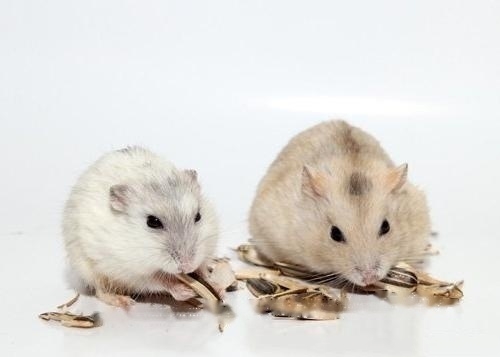It is well known that the reproductive ability of mice is extremely strong, and hamsters are no exception. The parametric cycle is short, the pregnancy period is also short, and the number of hamster babies in one litter is large, so the reproductive ability of hamsters How strong is it? How many hamsters can a mature hamster reproduce if the male and female slaves are separated?

If the first litter of hamster babies arrives , If the male and female hamsters are not separated, it is very likely that when the first litter of hamsters is weaned, the second litter of hamsters will come again, so the breeding cycle of hamsters is 1 month; if you take care of the physical recovery of the mother hamster, it is generally The male and female hamsters are separated before the first litter of hamster babies arrive. When the hamster babies are weaned and separated into cages, the female hamsters are allowed to live alone for a period of time to recover, and then they are considered to be caged with the male hamsters. In this case, the hamster breeding cycle can be counted as 2 moon.
According to the above hamster breeding situation, we put forward several assumptions, and use the data to simulate and calculate the total number of hamsters after the next pair of adult hamsters have been bred for one year. Suppose the conditions are as follows: a pair of newborn hamsters will have their first litter of hamster babies after three months, and a litter of hamster babies consists of three males and three females in total (the reality is not so coincidental, but it is very easy to achieve through the exchange of relatives between mouse friends ), the rational reproductive cycle is two months, and the uncontrolled reproductive cycle is one month.
Next, we will simulate and calculate the total number of hamster groups after a pair of adult hamsters breed within a year according to the situation of rational reproduction.
Initially a pair of hamsters, a total of 2;
3 new pairs of hamster babies in the first month, a total of 8;
None in the second month Newly added hamster babies, the total number is still 8;
In the third month, 3 pairs of hamster babies were added, and the total number was 14;
In the fourth month, 9 new pairs of babies ( In January, 3 new pairs of babies were born, and 3 pairs of babies were born in their early litters), with a total of 32 babies;
3 new pairs of hamster babies were added in the fifth month, with a total of 38 babies;
In the sixth month, 18 new pairs of hamster babies (born from the adult hamster babies born in January and March respectively), bringing the total number to 74;
In the seventh month, 30 new pairs of hamster babies ( 9 pairs of baby hamsters were bred in April, and 27 pairs of hamster babies were born in the head litters), the total number reached 134;
18 pairs of hamster babies were added in the eighth month, the total number reached 170;
93 new baby hamster pairs were added in the ninth month, bringing the total to 356;
108 new baby hamster pairs were added in the ninth month, bringing the total to 572;
the eleventh month 147 pairs of baby hamsters were added, bringing the total to 866;
297 pairs of baby hamsters were added in the twelfth month, bringing the total to 1,460.
To sum up, after a pair of hamsters reproduce rationally for one year, the total number of hamsters can exceed thousands. Isn't such a fecundity amazing?
![[Dog Training 5] The training method of pet dog dining etiquette](/static/img/12192/12192_1.jpg)




